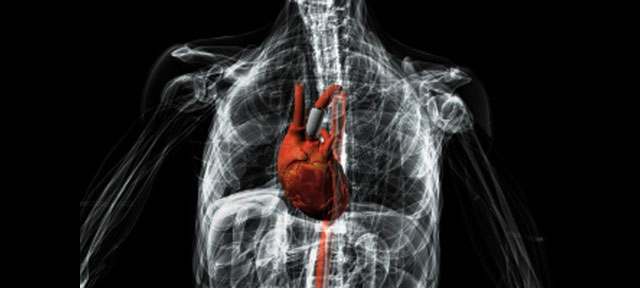One of the essential ways in which 3D printing is aiding the medical field, as detailed in the 3DPI Industry Report on the topic, is through its ability to create treatments tailored to individuals. Researchers at Nottingham Trent University (NTU) and Nottingham University Hospitals NHS Trust in the UK have used this to their advantage by designing a 3D-printed electronic smart pump that could change the way doctors treat heart disease the world over.
According to the NTU website, the pump takes the form of an aortic graft, made from an electronically sensitive smart material surrounding a woven tube. Powered by a small battery, the smart material expands when an electric current is applied. The graft, which would replace a piece of the heart’s large artery, would contract and expand in response to the needs of the heart. By countering the diseased heart’s bloodflow, the pump could shrink to increase bloodflow to the heart and expand to deliver oxygen to the rest of the body. The researchers believe that, using MRI scans, they will be able to tailor their pumps to fit the size and shape of each individual patient.
Moreover, the system will be self-contained so that patients will no longer need to be hooked up to external equipment. Dr. Philip Breedon, the research team leader and expert in smart technologies at NTU’s School of Architecture, Design and the Built Environment, explains how the pump can both increase the mobility of patient’s suffering from heart disease and save countless lives:
This device could really be groundbreaking and more effective than any other therapy currently being used around the world. Chronic heart failure is a major health challenge and up to 40 per cent of sufferers die within the first year. The best form of treatment is a heart transplant, but the demand by far outweighs the supply as around 160,000 people require one in Europe each year, but only 600 donor hearts are available. The technology currently used to help people with acute heart failure can only be used for a few days and involves the patient being attached to large external machines which need to be plugged into the mains power supply. The smart aortic graft has the potential to not only extend a patient’s life, but also to provide them with mobility, comfort and a reduced need for carers.
Consultant cardiac surgeon at Nottingham University Hospitals NHS Trust, associate professor David Richens believes that the technology will make the treatment of heart disease, and other diseases, much more affordable:
The smart aortic graft is a unique, cutting edge solution to a global health problem and promises to be cheaper and better than current devices. The cost of heart failure in the UK alone is £625 million a year and, according to the World Heart Failure Society, incidences of heart failure are steadily rising around the globe. The smart aortic graft would revolutionise the way people are treated and the technologies which underpin the design have the potential to transform the treatment of other diseases, such as Esophageal Achalasia. Designs such as this are revealing the true potential of smart materials in medical product design. This technology really could be the start of a new beginning in the way we use equipment to help save people’s lives.
Projects relating to the smart graft will be displayed at the Nottingham Trent University Art and Design Postgraduate Expo 2013 later on in September.
Source: NTU




